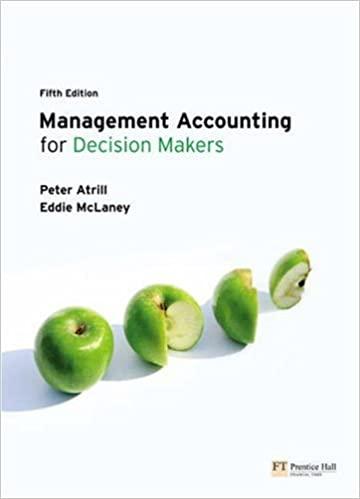A business manufactures refrigerators for domestic use. There are three models: Lo, Mid and Hi. The models,
Question:
A business manufactures refrigerators for domestic use. There are three models: Lo, Mid and Hi. The models, their quality and their price are aimed at different markets. Product costs are computed on a blanket overhead-rate basis using a labour-hour method. Prices as a general rule are set based on cost plus 20 per cent. The following information is provided: Material cost (/unit) Direct labour hours (per unit) Budget production/sales (units) Lo Mid Hi 25 62.5 105 1/2 1 1 20,000 1,000 10,000 The budgeted overheads for the business amount to 4,410,000. Direct labour is costed at 8 an hour. The business is currently facing increasing competition, especially from imported goods. As a result, the selling price of Lo has been reduced to a level that produces very little profit margin. To address this problem, an activity-based costing approach has been suggested. The overheads are examined and these are grouped around main business activities of machining (2,780,000), logistics (590,000) and establishment (1,040,000) costs. It is maintained that these costs could be allocated based respectively on cost drivers of machine hours, material orders and space, to reflect the use of resources in each of these areas. After analysis, the following proportionate statistics are available related to the total volume of products: Lo Mid % % I do Hi % Machine hours Material orders Space 40 15 47 42 18 569 444 45 47 40.
Required:
(a) Calculate for each product the full cost and selling price determined by:
(i) The original costing method.
(ii) The activity-based costing method.
(b) What are the implications of the two systems of costing in the situation given?
(c) What business/strategic options exist for the business in the light of the new information?
AppendixLO1
Step by Step Answer:

Management Accounting For Decision Makers
ISBN: 9780273710448
5th Edition
Authors: Peter Atrill, E. J McLaney





